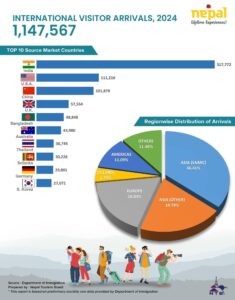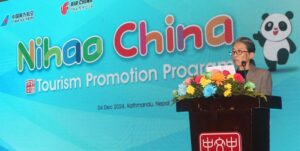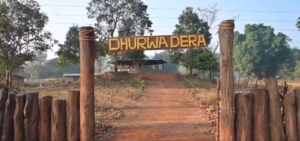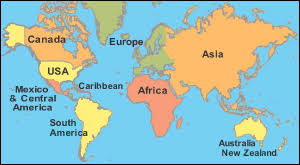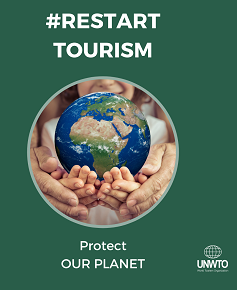Nepal reopens heritage sites despite UNESCO concerns
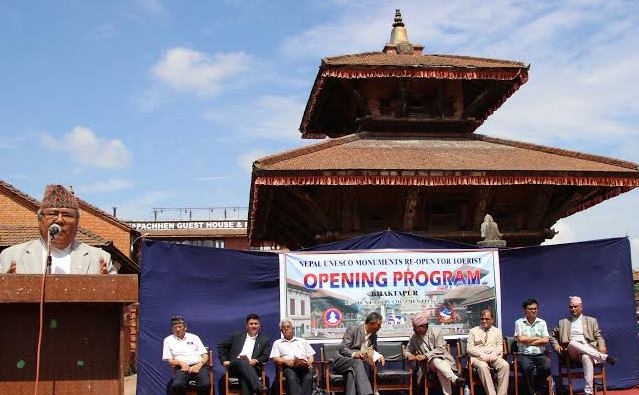
By Ramesh Tiwari —
Kathmandu: Nepal government reopened six world heritage sites in Kathmandu Valley to attract foreign tourists despite safety concerns raised by UNESCO.
The heritage sites reopened for visitors are three Durbar Squares of Kathmandu, Patan ,Bhaktapur, Pashupatinath temple area, Swayambhu and Bouddha Stupa.
The earthquake of April 25 and May 12 had destroyed several historical monuments and world heritage sites in Kathmandu valley.
Minister for Culture,Tourism and Civil Aviation announced the opening of the damaged heritage sites amidst a function in Bhaktapur Durbar Square today.
Tourism is the worst-hit sector with an economic loss of more than 81 billion Nepalese Rupees.The tourism sector needs 41.33 billion Nepalese rupees (413.3 million U.S. dollars) for reconstruction and rebuilding.
UNESCO raises safety concerns
According to UNESCO,the devastating earthquakes of 25 April and the aftershocks that followed have heavily damaged the monuments and sites within the Kathmandu Valley World Heritage property, as well as an enormous amount of other cultural sites in the north western area of Nepal.
As many of the monuments in these sites are still in a precarious state, the UNESCO Office in Kathmandu reminds the general public to be extra cautious and reconsider the necessity of visiting those sites, while hoping that the decision of reopening can be re-examined. It has requested the Nepal Tourism Board and the Department of Archaeology to carefully plan the reopening process, prioritizing safety and security.
In sites like Bhaktapur Durbar Square, Pashupati and Bauddhanath, which are already accessible, there is an urgent need to secure perimeters around the damaged structures and restrict access to locations where structures have collapsed.
According to the assessment by UNESCO, the Patan Museum is unsafe, and setting up perimeters around several damaged temples and limiting access to Patan Durbar Square is recommended.
As Bauddhanath has suffered damage only to the upper part of the mahachaitya and two small stupas to the east and north corner of the main stupa, access to the site is considered safe; It is suggested that the upper platforms remain closed.
Swayambhu and Changu Narayan, both with landslide risks, are recommended to remain closed until proper assessments are carried out. In addition, the process of salvaging the artefacts is still ongoing in Swayambhu and UNESCO believes that opening the area presents a risk of theft of art and cultural objects.
For Hanumandhoka (Kathmandu) Durbar Square, UNESCO urges that the access to the collapsed temples and platforms must be forbidden as people climbing on them weaken the structures. Security perimeters around the collapsed and damaged temples are essential and extra precautions are needed if movements are to be allowed on the pathway between Basantapur plaza and Durbar Square. All the parts of collapsed historic monuments and other artefacts needs to salvaged, sorted and stored away in an appropriate manner before the remaining debris is removed from the heritage sites.
Apart from being tourist attractions, the monument zones of the Kathmandu Valley World Heritage site are a part of the living urban heritage. Such considerations will allow opening up of sites for pilgrims and visitors in a systematic manner.
Given the enormous importance of cultural heritage to the tourist economy, UNESCO considers that the future rebuilding programme should incorporate ways for visitors to see and understand work in progress. Furthermore, the rebuilding and conservation work needs to be part of a wider sustainable development strategy that aims to revitalize the economy of the area.
UNESCO urges for a well-coordinated mechanism with creative problem-solving for the management of damaged sites. UNESCO is committed to support the Department of Archaeology in devising procedures to secure the heritage sites, ensuring proper treatment of artefacts and devising plans for limited access to the heritage sites after studying each case individually.
June 15, 2015




